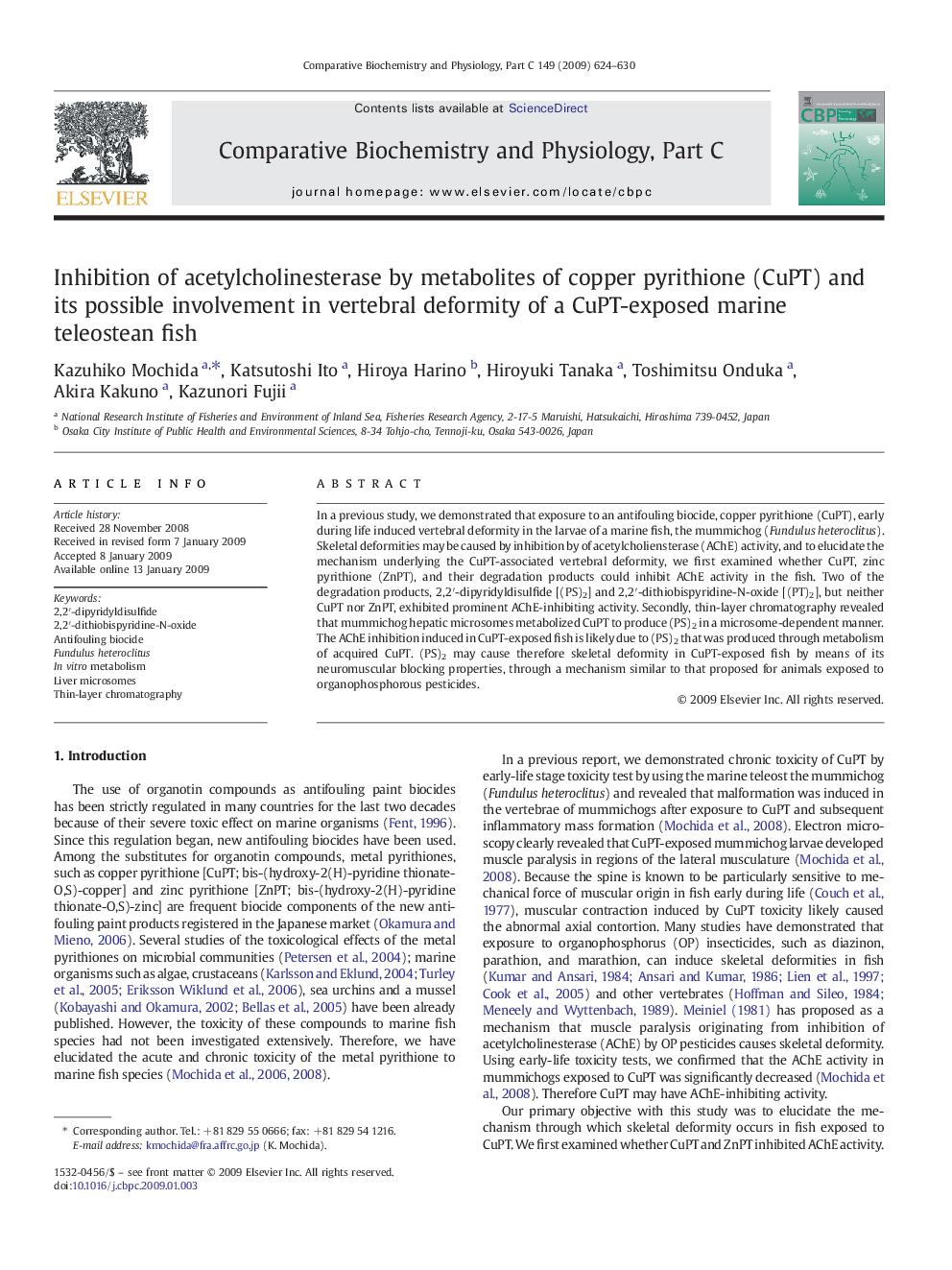| Article ID | Journal | Published Year | Pages | File Type |
|---|---|---|---|---|
| 1978013 | Comparative Biochemistry and Physiology Part C: Toxicology & Pharmacology | 2009 | 7 Pages |
In a previous study, we demonstrated that exposure to an antifouling biocide, copper pyrithione (CuPT), early during life induced vertebral deformity in the larvae of a marine fish, the mummichog (Fundulus heteroclitus). Skeletal deformities may be caused by inhibition by of acetylcholiensterase (AChE) activity, and to elucidate the mechanism underlying the CuPT-associated vertebral deformity, we first examined whether CuPT, zinc pyrithione (ZnPT), and their degradation products could inhibit AChE activity in the fish. Two of the degradation products, 2,2′-dipyridyldisulfide [(PS)2] and 2,2′-dithiobispyridine-N-oxide [(PT)2], but neither CuPT nor ZnPT, exhibited prominent AChE-inhibiting activity. Secondly, thin-layer chromatography revealed that mummichog hepatic microsomes metabolized CuPT to produce (PS)2 in a microsome-dependent manner. The AChE inhibition induced in CuPT-exposed fish is likely due to (PS)2 that was produced through metabolism of acquired CuPT. (PS)2 may cause therefore skeletal deformity in CuPT-exposed fish by means of its neuromuscular blocking properties, through a mechanism similar to that proposed for animals exposed to organophosphorous pesticides.
